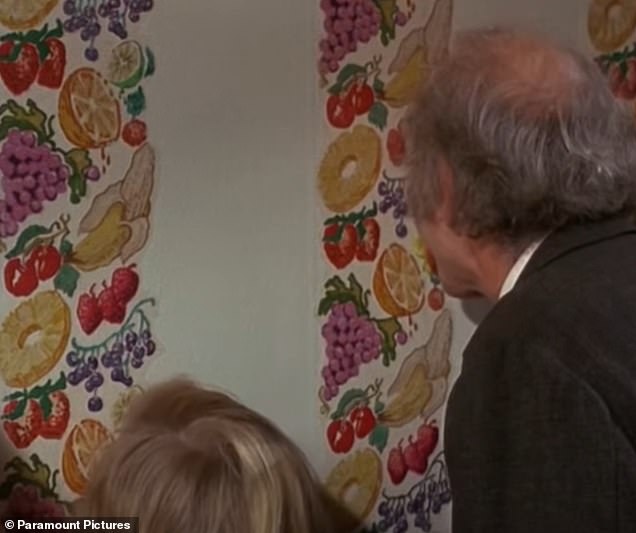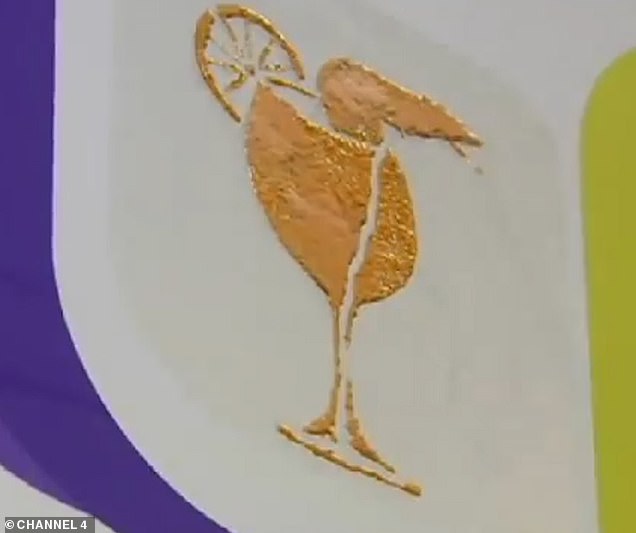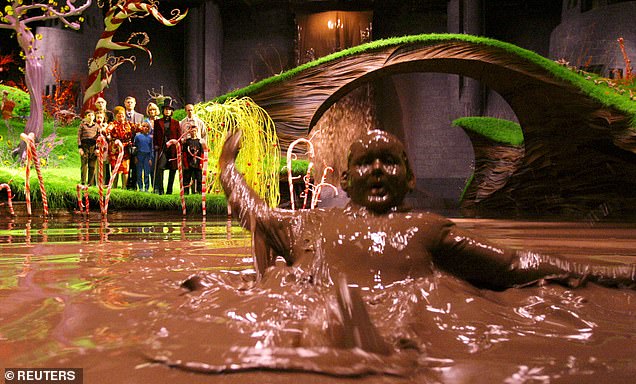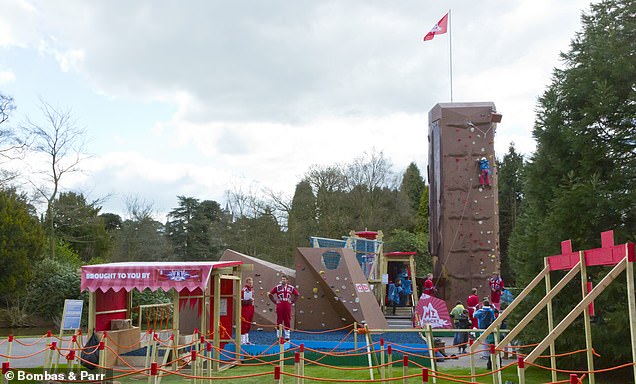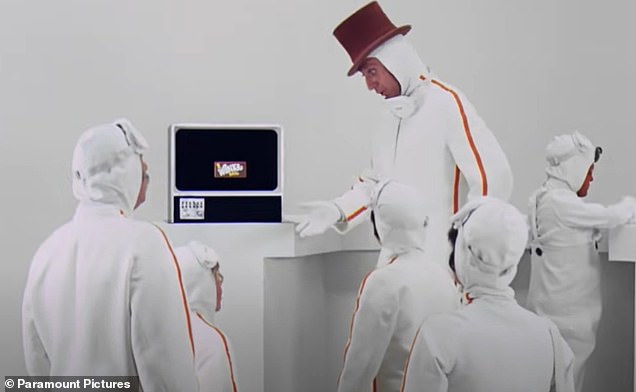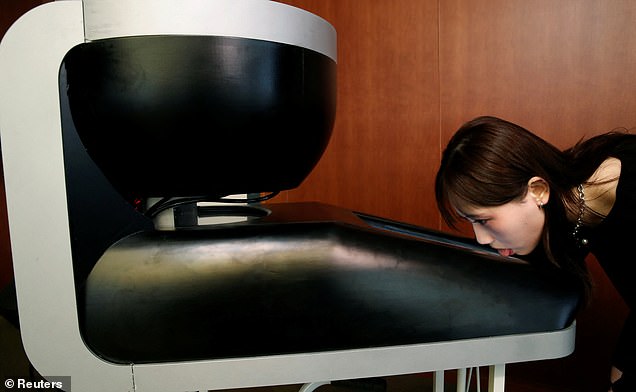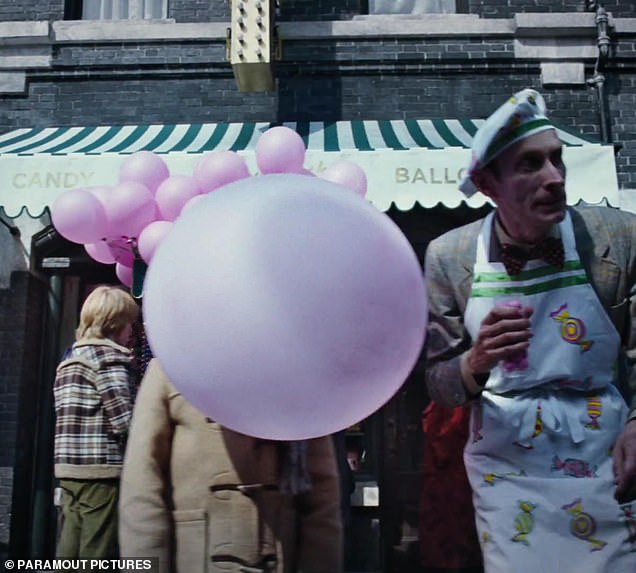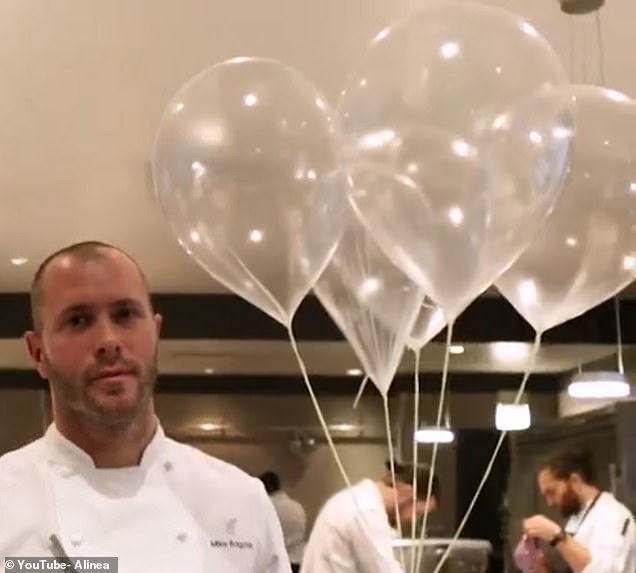From lickable wallpaper to three-course dinner gum: As Wonka hits cinemas, MailOnline reveals the memorable foods from Charlie and the Chocolate Factory that are now a REALITY
It's been nearly 60 years since Roald Dahl wrote his classic children's novel, Charlie and the Chocolate Factory.
However, many of us still dream of the imaginative sweets imagined by eccentric chocolatier Willy Wonka.
Now, those with a sweet tooth will be happy to hear that many of these desserts are no longer limited to our imagination.
From lickable wallpaper to rivers of chocolate, food scientists are doing their best to create it Roald DahlIdeas become reality.
With the new Wonka film set to hit cinemas this week, MailOnline reveals Wonka's incredible creations now out in the real world.
With the new Wonka film hitting cinemas this week, MailOnline reveals Wonka's incredible creations that now exist in the real world
Lickable background
One of the first things kids are treated to in Charlie and the Chocolate Factory is the “lickable wallpaper.”
“Lick an orange.” It tastes like orange. Licking pineapple. It tastes like pineapple. Help yourself. 'Try it,' Wonka Gene Wilder encourages the characters.
While this may sound like a fantasy, food scientist Professor Alan Chalmers says this is actually easy to make.
“This would be very easy,” he explained.
“You simply need to include the food-safe chemicals for each of the desired flavor components in the wallpaper – and when it is licked, the flavor will be perceived.”
Real-life Willy Wonka, Heston Blumenthal, brought this to life in his 2010 series “Heston's Feasts.”
In the show, Heston extracted the flavors of a shrimp cocktail using different techniques to create a flavor paste that could be applied to a wall.
Making lickable wallpaper is surprisingly easy as all it takes is coating the wall with chemicals that mimic the flavor of different foods.
His guests were then invited to lick the colorful shapes to taste the food.
In the film, Wonka excitedly tells the children: “Raspberries taste like raspberries!”
Although raspberries don't exist in the real world, Professor Chalmers says this wouldn't be a problem.
Using a technique called 'virtual flavour', Professor Chalmers says we can extract the chemical components of flavors to create entirely new tastes.
Professor Chalmers told MailOnline: 'Because the virtual flavor is a simulation – we can add and subtract any of the flavor components and move from one point in the flavor space to any other.'
He says we are able to “go on a journey through all possible flavors until we arrive at the one you like.”
Chocolate waterfall
What part of Wonka's Chocolate Factory could be more iconic than the massive chocolate waterfall?
In the films, Wonka explains that all the chocolate in the factory is mixed by waterfall and untouched by human hands.
However, the real-life version was much influenced by human hands, as it was built into a 32-foot-tall climbing wall.
At a promotional event for Rocky's Biscuit Bar, Alton Towers set up a huge scratch and sniff stand.
The tower included a chocolate waterfall weighing four tons, and 70,000 liters of chocolate flowed through it every hour.
However, real chocolate cascades would not be of much use in a factory as the chocolate must be mixed with additional fat to flow freely at low temperatures.
Commercially available chocolate fountains require about half a cup of oil for every five pounds of chocolate to flow smoothly.
The realistic chocolate waterfall was built in 2012 with a 32-foot climbing wall and a flow of four tons of liquid chocolate.
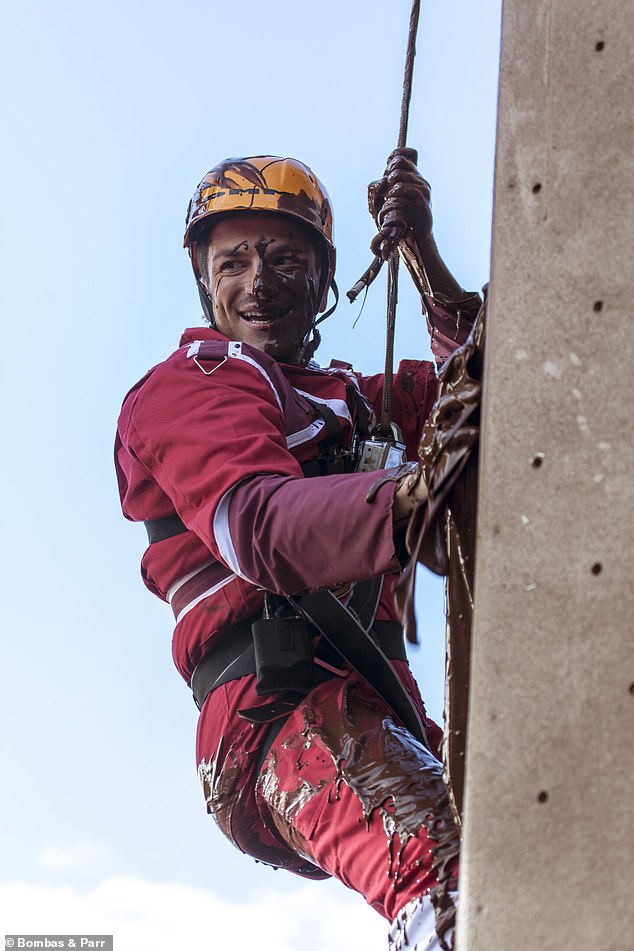
A chocolate waterfall might be a great idea in a fairy tale, but it's actually a mess of chocolate as Peter Andre discovered when he tried to climb it.
TV chocolate
In the movies, Wonka's latest and greatest invention is TV chocolate.
The independent chocolatier uses television cameras to project a giant chocolate bar from one end of the room to a television screen at the other.
Charlie is then able to reach right into the screen and pull out a perfectly formed, edible Wonka Bar.
While technology may not allow you to pull food from a screen, technologies now exist that can allow you to taste it.
Japanese researchers from Meiji University have developed Taste the TV (TTTV) software that allows you to lick the screen and taste what is being shown.
The device contains a carousel of 10 flavor packets that are sprayed onto a roll of sanitary film that is placed over the screen.
These flavors combine to produce the taste of foods such as milk chocolate or pizza.
Although scientists are not completely able to transmit whole chocolate bars via television, they are now able to transmit the taste of chocolate
However, Professor Chalmers says getting the right taste for TV will be a difficult challenge.
“True flavor is analyzed to extract flavor components including taste, texture and aroma,” he explained.
“There are only five basic tastes – sweet, sour, bitter, salty and umami and three mouth tastes – oily, astringent and capsaicin.”
Professor Chalmers says the smell is much more complex, with a single cup of coffee containing up to 10,000 different aromas as part of its flavour.
If we were just to approximate the taste, it would take six or nine odor compounds to get close to the taste of TV chocolate.
A recipe made up of these chemicals can then be broadcast to TTTV televisions around the world for people to taste along with their favorite programmes.
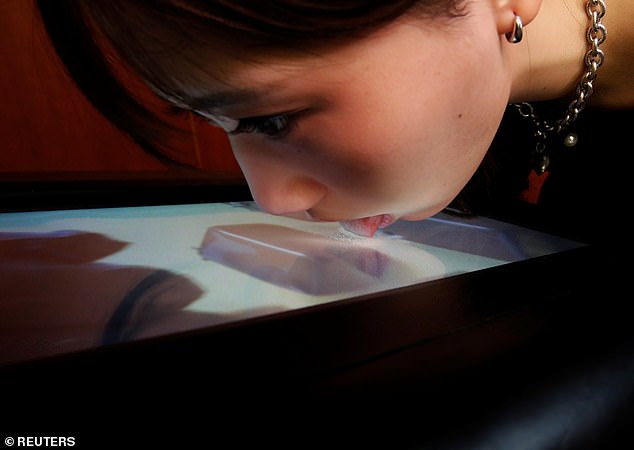
The Taste the Television project has created a screen that can be coated with flavoring chemicals to recreate the flavor of images on the screen for viewers to lick
Sugar balloons
Of course, not all of Willy Wonka's secret recipes remain completely secret.
In Tim Burton's 2005 film we see how spies from a rival candy maker steal the recipe for Wonka candy balloons.
Kids inflate these pink sugar balloons to large sizes before popping them and eating them.
Although this concept may seem fanciful, these inflatable objects have since become very popular.
The edible dessert balloon first appeared in 2014 when upscale restaurant Alinea included it on its $210 (£167) tasting menu.
The balloons were completely edible even down to the string made from dried green apples.
For an extra cheerful touch, the balloons were filled with helium so guests could inhale the gas and enjoy a squeaky talk.
Just like in the movies, the sugar balloon recipe has spread widely since its original inventor and now appears as a popular party treat
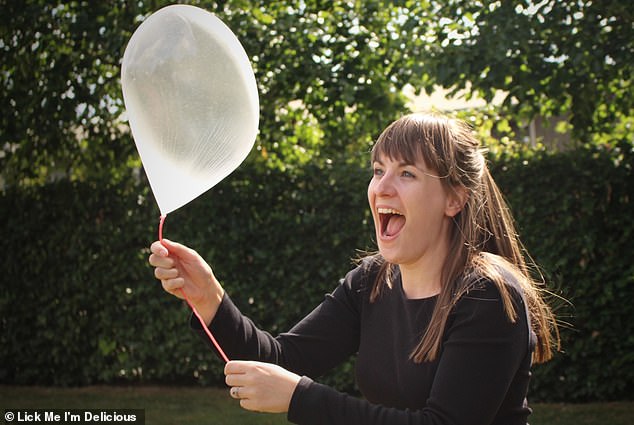
Realistic candy balloons use sugar and helium to create candy that can still bring a sense of childlike joy
Since then, these desserts have left the menus of upscale restaurants and become a popular party treat.
Since balloons are very easy to make, they can be made to order.
Oxfordshire-based company Lick Me I'm Delicious has created a mobile cart capable of preparing these delicious Wonka-esq treats.
“The edible balloons were something Charlie (the company founder) had seen done in Michelin-starred restaurants in America,” event director Alanya O'Donnell said. So we thought it would be cool to launch a machine that makes edible balloons en masse for events.
The balloons come in six different flavors including passion fruit, bubblegum, and apple pie.
“There's a lot of scientific experimentation that goes into this to achieve the perfect combination,” Ms. O'Donnell said. Oxford Mail.
However, just like with Willy Wonka, the exact formula remains a secret.
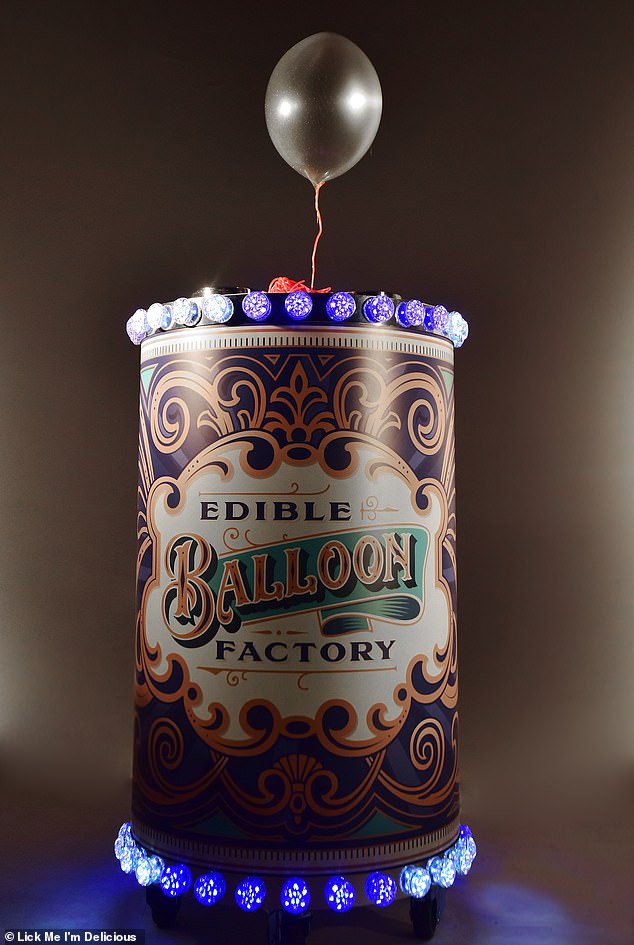
Oxfordshire-based company Lick Me I'm Delicious has developed a mobile cart capable of producing custom-made candy balloons
Three course dinner gummies
Unfortunately, like in Charlie and the Chocolate Factory, the three-course dinner gummies aren't quite ready yet — but they may be on their way soon.
In the books and movies, this is a special piece of gum that reveals the flavors of each part of a three-course dinner.
Violet Beauregard first tastes tomato soup, followed by a main course of roast beef, and finally blueberry pie.
Of course, the gum isn't quite ready and the disastrous side effects cause Violet to explode like a giant berry.
In real life, the challenges of making chewing gum work aren't very exciting.
Making the gum taste like each of the three ingredients individually is no problem.
As YouTuber Brighton Taylor explains, simply grinding up or making an extract of each flavor can create a gummies that taste like all parts of a roast dinner.
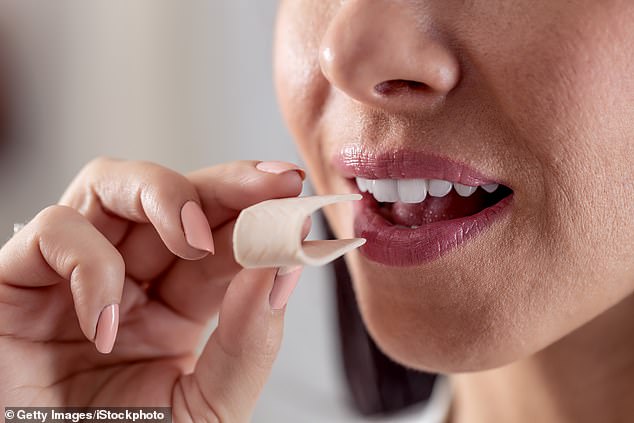
Getting gummies to taste like dinner isn't a problem, but making the flavors come through one after the other requires advanced nanotechnology that's not quite ready yet (stock image)
The difficulty is getting one flavor after another in succession.
However, Professor Dave Hart from the Norwich Food Research Institute claims to have found a way to make this a reality.
Using nanotechnology, he says it is possible to create nanocapsules of flavor that can be released at different times.
Professor Hart said: “Science and technology are changing the future of food, and these nanoparticles may hold the answer to creating three-course gourmet chewing gum.”
“The tomato soup pod will break down on contact with saliva, followed by the roast beef and blueberry pie into stronger structures providing a sequential explosion of taste as you chew harder.”
So, even though it's not ready now, the children of the future could one day chew three-course dinner gum.
(tags for translation) Daily Mail

